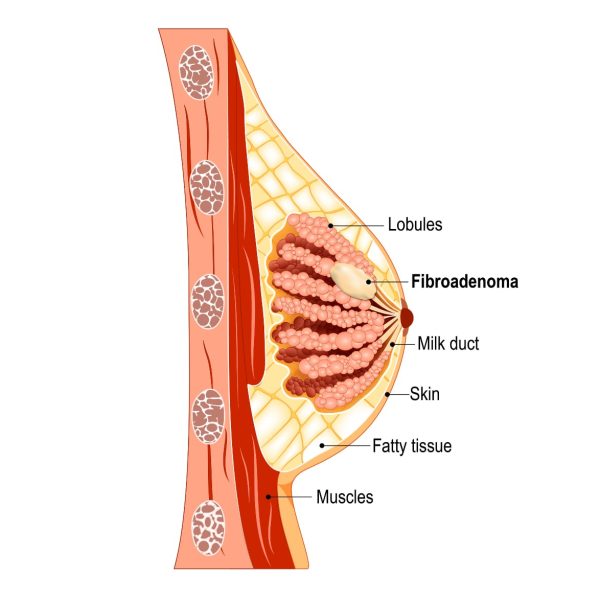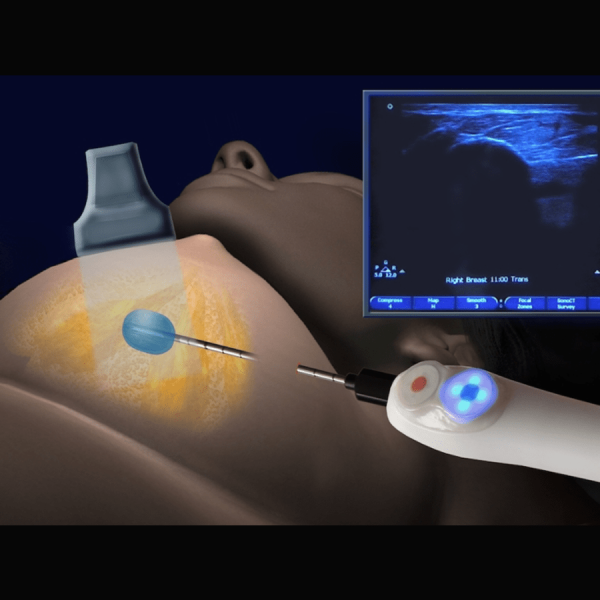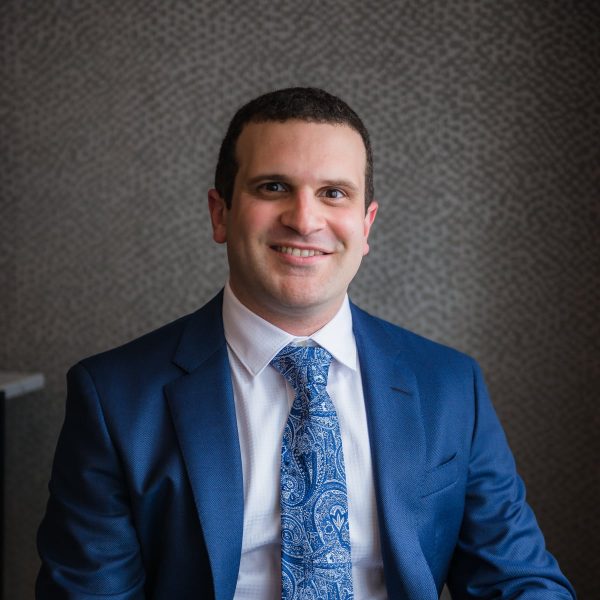Cryoablation for Fibroadenomas
Fibroadenomas are the most common type of benign breast lump. Treatment with Cryoablation involves the use of extreme-cold to kill the fibroadenoma cells. It is less invasive than surgery and is a well-tolerated outpatient procedure.

What is a Fibroadenoma?
Fibroadenomas are the most common type of a breast lump.
They are solid (not fluid-filled) masses, with clearly-defined edges and are typically round or oval in shape. Fibroadenomas are benign, which means they are not cancerous, and do not turn into cancer. They may increase in size with time, particularly with hormonal changes.
Common Symptoms of a Fibroadenoma?
Fibroadenomas may be palpable (able to be felt) in the breast. While some remain unchanged for many years, they may grow to a size larger than a golf ball over time. Some women find these lumps or masses uncomfortable and bothersome, and may have associated pain or tenderness. ln some cases, fibroadenomas can physically deform the breast. The level of anxiety with these breast masses is personal.
Treatment for Fibroadenoma
Cryoablation for cancer is a treatment to kill cancer cells with extreme cold.
During cryoablation, a thin, wand-like needle (cryoprobe) is inserted through your skin and directly into the cancerous tumour. The probe is guided using ultrasound. A gas is pumped into the cryoprobe in order to freeze the tissue. Then the tissue is allowed to thaw. The freezing and thawing process is repeated several times during the same treatment session.
Cryoablation has been successfully used to treat various type of solid tumours, including breast carcinomas, as well as benign breast lumps such as fibroadenomas. This ablation method has the advantage of being a minimally invasive procedure useful in various clinical situations, including early breast cancer and metastatic breast cancer, when co-morbidities preclude the use of surgical treatment.

Exclusive Access
Dr Ruben Cohen-Hallaleh has granted exclusive access to the IceCure ProSense breast cryoablation system and is the only breast surgeon in Sydney with access to this cutting-edge technology.
Conditions Treated
Cryoablation is a safe and effective alternative treatment to surgery for fibroadenomas.
While this technology is used extensively for various small cancers in the USA and Europe, Dr Cohen-Hallaleh preference is to only utilise this technology to fibroadenomas at this stage.
Method of Action
The efficacy of cryoablation is based on the cytotoxic effects of cold that produce both instant and delayed destruction of cellular ultrastructure. Tissue destruction occurs when tissues are frozen to lethal temperatures lower than -40°C. Cold temperatures result in the increasing of intracellular osmolarity and freezing of extracellular water, and this draws out the water from the cells causing cellular dehydration. During the passive thaw phase, cell swelling and subsequent rupture occurs. Additionally, ice crystals in the intracellular milieu damage organelles and plasma membranes. Cryoablation also damages tumour cells by causing endothelial cell dysfunction, microthrombus formation, ischemia, and platelet aggregation.
Benefits
- No general anaesthetic required (the procedure can be performed under local anaesthetic in the clinic).
- No scarring.
- No post-operative pain after procedure.
- Safe to be performed during pregnancy.
Dr Ruben Cohen-Hallaleh
Sydney surgeon and educator, Dr Ruben Cohen-Hallaleh specialises in breast, endocrine, and general surgery. He brings together the latest in surgical techniques and non-invasive treatments with a careful consideration for each patient and their unique circumstance.

